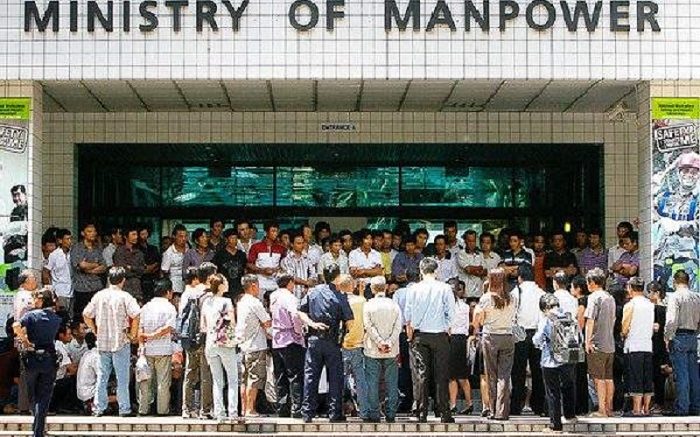The granting of 20,000 new citizens a year is making the Singaporeans’ unemployment rate look lower than it actually is!
I refer to the article “Unemployment rate for SG citizens inching up as FT employment continues to increase” (theonlinecitizen, Sep 14).
It states that “According to new labour data released by MOM yesterday (13 Sep), unemployment rate is inching up for Singapore citizens.
The overall unemployment rate rose from 2 per cent as at March 31 to 2.1 per cent at the end of June while that of Singapore citizens went up from 3 to 3.1 per cent.
Meanwhile, for the first half of 2018, overall foreign employment (excluding foreign domestic workers) continued to grow.
Even though employment of EP holders fell by 3,400 in the first half, this was offset by a bigger increase in S-Pass holders by 5,300. Apparently, many of the former EP holders are holding S-Pass now due to the raising of EP qualifying salary last year. So, in actual fact, the number of foreign PMETs (EP and S-Pass holders together) has increased in the first half of 2018.
It is interesting to note that while MTI has maintained a healthy growth forecast for the Singapore economy at 2.5 – 3.5% this year, unemployment rate for Singapore citizens continues to inch up.”
31,050 new PRs and 22,102 new citizens a year?
In 2016, we granted 31,050 new PRs and 22,102 new citizens.
Highest in 13 years?
These were at seven and 13-year highs, respectively.
In other words – 2016’s figures were the highest in the previous 13 years for new citizens granted.
How many new PRs & citizens granted?
If the rate of granting new PRs and new citizens in the first two-quarters of this year is about the same as 2016’s – we may have granted about 15,525 new PRS (31,050 x 0.5) and 11,051 (22,102 x 0.5) new citizens up till June 2018.
How many of the “jobs growth” to S’poreans?
If this is the case (estimate) – how many of the locals’ employment growth in the first two-quarters of this year went to Singaporeans?
If 60% of new PRs working = 0 jobs growth to S’poreans?
To illustrate this with an example – if just 60 per cent of the estimated 15,525 new PRs granted were formerly foreigners with jobs – about 9,315 (15,525 × 60%) – perhaps none of the locals’ employment growth went to Singaporeans.
If 60% of new citizens working – true-blue Singaporeans’ unemployment rate even higher?
Perhaps this may have also contributed to the unemployment rate for Singaporeans increasing to just 3.1 per cent, when in fact, the rate for true-blue Singaporeans (excluding new citizen workers) may be even higher.
In other words, if not for the estimated number of new citizens granted who are working – the true-blue Singaporeans’ unemployment rate may have increased by more than the 0.1% to 3.1%, that we are being lead to believe.
Leong Sze Hian
